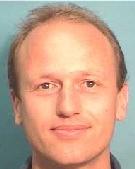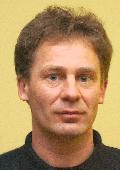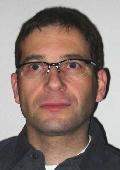Best Paper 2002
The U.V. Helava Award, sponsored by Elsevier Science B.V. and LH Systems, LLC, is a prestigious new ISPRS Award,
which was established to encourage and stimulate submission of high quality scientific papers by individual authors or groups to
the ISPRS Journal, to promote and advertise the Journal, and to honour the outstanding contributions of Dr. Uuno V. Helava
to research and development in Photogrammetry and Remote Sensing.
The Award is presented to authors of the best paper, written in English and published exclusively in the ISPRS Journal during the
four-year period from January of a Congress year, to December of the year prior to the next Congress. The Award consists of a monetary
grant of SFr. 10,000 and a plaque. A five-member jury, comprising experts of high scientific standing, whose expertise covers
the main topics included in the scope of the Journal, evaluates the papers. For each year of the four-year evaluation period, the best
paper is selected, and among these four papers, the one to receive the U.V. Helava Award.
The second U.V. Helava Award will be presented at the 20th ISPRS Congress, Istanbul, 12-23 July 2004. The five-member jury
appointed by the ISPRS Council evaluated the 32 papers of Vol. 57 (2002) and announced its decision for the Best Paper.
The winner of the 2002 Best Paper is:
 The shuttle radar topography mission - a new class of
digital elevation models acquired by spaceborne radar
The shuttle radar topography mission - a new class of
digital elevation models acquired by spaceborne radar
Bernhard Rabus, Michael Eineder, Achim Roth, Richard Bamler
German Aerospace Center (DLR), Oberpfaffenhofen, D-82234, Wessling, Germany




Jury's rationale for the paper selection
This paper provides a comprehensive and compact overview and thorough evaluation of the SRTM mission and products, and especially
high-resolution, high-accuracy global DEMs by SAR interferometry, an actual and important topic. The article provides a clear explanation of the
principles of InSAR, the SRTM instruments and mission, interferometric SAR data processing and evaluation of DEM quality, and gives a detailed
error analysis and examples. It is well written and understandable, informative and innovative, broad and detailed, and includes excellent figures.
This paper, by members of the competent DLR team which was the main responsible group for the X-SAR SRTM instrument, documents an important advancement
in remote sensing, the first single-pass interferometric SAR spaceborne mission.
In the name of the ISPRS and the U.V. Helava Award jury, I would like to congratulate the authors for this distinction and thank them for their
contribution. I would also like to thank the sponsors of the Award, and the jury members for their hard work and thorough evaluation.
Emmanuel P. Baltsavias
Editor-in-Chief, ISPRS Journal of Photogrammetry and Remote Sensing